Theoretical and Experimental Investigations on the Ultra-Low-Frequency Broadband of Quasi-Static Metamaterials
Abstract
:1. Introduction
2. Models and the Theoretical Methods
2.1. Quasi-Static REM Structure
2.2. Theoretical Method
3. Ultra-Low-Frequency Broadband Characteristics
3.1. Ultra-Low-Frequency Broadband Structure Analysis
3.2. Mechanism of the Ultra-Low Broadband Characteristics
3.3. Influence of the Geometric Parameters on the Ultra-Low-Frequency Broadband Characteristics
3.4. Influence of the Material Parameters on the Ultra-Low-Frequency Broadband Characteristics
4. Time Domain Analysis of the Ultra-Low-Frequency Broadband Characteristics
5. Experimental Investigations on the Ultra-Low-Frequency Broadband Characteristics
6. Conclusions
Author Contributions
Funding
Institutional Review Board Statement
Informed Consent Statement
Data Availability Statement
Conflicts of Interest
References
- Sigalas, M.; Economou, E.N. Elastic and Acoustic Wave Band Structure. J. Sound Vib. 1992, 158, 377–382. [Google Scholar] [CrossRef]
- Flores Parra, E.A.; Bergamini, A.; Van Damme, B.; Ermanni, P. Controllable Wave Propagation of Hybrid Dispersive Media with LC High-Pass and Band-Pass Networks. Appl. Phys. Lett. 2017, 110, 184103. [Google Scholar] [CrossRef]
- Kushwaha, M.; Halevi, P.; Dobrzynski, L.; Djafari-Rouhani, B. Acoustic Band Structure of Periodic Elastic Composites. Phys. Rev. Lett. 1993, 71, 2022–2025. [Google Scholar] [CrossRef] [PubMed]
- Goffaux, C.; Maseri, F.; Vasseur, J.O.; Djafari-Rouhani, B.; Lambin, P. Measurements and Calculations of the Sound Attenuation by a Phononic Band Gap Structure Suitable for an Insulating Partition Application. Appl. Phys. Lett. 2003, 83, 281–283. [Google Scholar] [CrossRef]
- Yeh, J.Y.; Chen, L.W. Wave Propagations of a Periodic Sandwich Beam by FEM and the Transfer Matrix Method. Compos. Struct. 2006, 73, 53–60. [Google Scholar] [CrossRef]
- Liu, Z.; Zhang, X.; Mao, Y.; Zhu, Y.Y.; Yang, Z.; Chan, C.T.; Sheng, P. Locally Resonant Sonic Materials. Science 2000, 289, 1734–1736. [Google Scholar] [CrossRef]
- Jian, W.; Xiao-Chun, B.; Yong, X.; Ming-Xin, G.; Dian-Long, Y.; Ji-Hong, W. Low frequency band gaps and vibration reduction properties of a multi-frequency locally resonant phononic plate. Acta Phys. Sin. 2016, 65, 064602. [Google Scholar] [CrossRef]
- Hussein, M.I.; Leamy, M.J.; Ruzzene, M. Dynamics of Phononic Materials and Structures: Historical Origins, Recent Progress, and Future Outlook. Appl. Mech. Rev. 2014, 66, 040802. [Google Scholar] [CrossRef]
- Wu, J.; Ma, F.; Zhang, S.; Shen, L. Application of Acoustic Metamaterials in Low-frequency Vibration and Noise Reduction. J. Mech. Eng. 2016, 52, 68–78. [Google Scholar] [CrossRef]
- Ma, G.; Sheng, P. Acoustic Metamaterials: From Local Resonances to Broad Horizons. Sci. Adv. 2016, 2, e1501595. [Google Scholar] [CrossRef] [PubMed] [Green Version]
- Nouh, M.; Aldraihem, O.; Baz, A. Wave Propagation in Metamaterial Plates with Periodic Local Resonances. J. Sound Vib. 2015, 341, 53–73. [Google Scholar] [CrossRef]
- Matlack, K.H.; Bauhofer, A.; Krödel, S.; Palermo, A.; Daraio, C. Composite 3D-Printed Meta-Structures for Low Frequency and Broadband Vibration Absorption. Proc. Natl. Acad. Sci. USA 2015, 113, 8386–8390. [Google Scholar] [CrossRef]
- Ma, F.; Wu, J.H.; Huang, M.; Zhang, W.; Zhang, S. A Purely Flexible Lightweight Membrane-Type Acoustic Metamaterial. J. Phys. D Appl. Phys. 2015, 48, 175105. [Google Scholar] [CrossRef]
- Badreddine Assouar, M.; Oudich, M. Enlargement of a Locally Resonant Sonic Band Gap by Using Double-Sides Stubbed Phononic Plates. Appl. Phys. Lett. 2012, 100, 123506. [Google Scholar] [CrossRef]
- Krushynska, A.O.; Kouznetsova, V.G.; Geers, M.G.D. Towards Optimal Design of Locally Resonant Acoustic Metamaterials. J. Mech. Phys. Solids 2014, 71, 179–196. [Google Scholar] [CrossRef]
- Gao, N.; Wu, J.H.; Yu, L. Research on Bandgaps in Two-Dimensional Phononic Crystal with Two Resonators. Ultrasonics 2015, 56, 287–293. [Google Scholar] [CrossRef]
- Torrent, D.; Sánchez-Dehesa, J. Radial Wave Crystals: Radially Periodic Structures from Anisotropic Metamaterials for Engineering Acoustic or Electromagnetic Waves. Phys. Rev. Lett. 2009, 103, 064301. [Google Scholar] [CrossRef]
- Zhu, X.; Liang, B.; Kan, W.; Zou, X.; Cheng, J. Acoustic Cloaking by a Superlens with Single-Negative Materials. Phys. Rev. Lett. 2011, 106, 014301. [Google Scholar] [CrossRef] [PubMed]
- Torrent, D.; Sánchez-Dehesa, J. Acoustic Resonances in Two-Dimensional Radial Sonic Crystal Shells. New J. Phys. 2010, 12, 073034. [Google Scholar] [CrossRef]
- Li, Y.; Zhou, Q.; Zhu, L.; Guo, K. Hybrid Radial Plate-Type Elastic Metamaterials for Lowering and Widening Acoustic Bandgaps. Int. J. Mod. Phys. B 2018, 32, 1850286. [Google Scholar] [CrossRef]
- An, S.; Shu, H.; Liang, S.; Shi, X.; Zhao, L. Band Gap Characteristics of Radial Wave in a Two-Dimensional Cylindrical Shell with Radial and Circumferential Periodicities. AIP Adv. 2018, 8, 035110. [Google Scholar] [CrossRef]
- Gao, N.; Hou, H.; Wu, J.H.; Cheng, B. Low Frequency Band Gaps below 10 Hz in Radial Flexible Elastic Metamaterial Plate. J. Phys. D Appl. Phys. 2016, 49, 435501. [Google Scholar] [CrossRef]
- Shi, X.; Shu, H.; Zhu, J.; Wang, X.; Dong, L.; Zhao, L.; Liang, S.; Liu, R. Research on Wave Bandgaps in a Circular Plate of Radial Phononic Crystal. Int. J. Mod. Phys. B 2016, 30, 1650162. [Google Scholar] [CrossRef]
- Gao, N.; Wu, J.H.; Guan, D. Research on the Large Band Gaps in Multilayer Radial Phononic Crystal Structure. Mod. Phys. Lett. B 2016, 30, 1650108. [Google Scholar] [CrossRef]
- Ma, T.; Chen, T.; Wang, X.; Li, Y.; Wang, P. Band Structures of Bilayer Radial Phononic Crystal Plate with Crystal Gliding. J. Appl. Phys. 2014, 116, 104505. [Google Scholar] [CrossRef]
- Li, Y.; Chen, T.; Wang, X.; Yu, K.; Chen, W. Propagation of Lamb Waves in One-Dimensional Radial Phononic Crystal Plates with Periodic Corrugations. J. Appl. Phys. 2014, 115, 054907. [Google Scholar] [CrossRef]
- Gao, N.; Hou, H.; Xin, H. A Single and Double Slotting Radial Acoustic Metamaterial Plate. Mod. Phys. Lett. B 2017, 31, 1750128. [Google Scholar] [CrossRef]
- Yao, S.; Zhou, X.; Hu, G. Investigation of the Negative-Mass Behaviors Occurring below a Cut-off Frequency. New J. Phys. 2010, 12, 103025. [Google Scholar] [CrossRef]
- Craster, R.; Kaplunov, J.; Pichugin, A. High-Frequency Homogenization for Periodic Media. R. Soc. Lond. Proc. Ser. A 2010, 466, 2341–2362. [Google Scholar] [CrossRef]
- Achaoui, Y.; Antonakakis, T.; Brûlé, S.; Craster, R.V.; Enoch, S.; Guenneau, S. Clamped Seismic Metamaterials: Ultra-Low Frequency Stop Bands. New J. Phys. 2017, 19, 063022. [Google Scholar] [CrossRef] [Green Version]
- Oh, J.H.; Assouar, B. Quasi-Static Stop Band with Flexural Metamaterial Having Zero Rotational Stiffness. Sci. Rep. 2016, 6, 33410. [Google Scholar] [CrossRef] [PubMed]
- Yu, K. Research on the Bandgap Mechanism and Its Application Basis of Phononic Crystals with Slit Characteristic; Xi’an Jiaotong University: Xi’an, China, 2017. [Google Scholar]
- Achaoui, Y.; Khelif, A.; Benchabane, S.; Robert, L.; Laude, V. Experimental Observation of Locally-Resonant and Bragg Band Gaps for Surface Guided Waves in a Phononic Crystal of Pillars. Phys. Rev. B 2011, 83, 104201. [Google Scholar] [CrossRef]
- Krushynska, A.O.; Kouznetsova, V.G.; Geers, M.G.D. Visco-Elastic Effects on Wave Dispersion in Three-Phase Acoustic Metamaterials. J. Mech. Phys. Solids 2016, 96, 29–47. [Google Scholar] [CrossRef]
- Wen, X. Sheng zi jing ti =: Phononic Crystals; Di 1 ban.; Guo Fang Gong Ye Chu Ban She: Beijing, China, 2009; ISBN 978-7-118-06342-4. [Google Scholar]
- Lefebvre, G.; Antonakakis, T.; Achaoui, Y.; Craster, R.V.; Guenneau, S.; Sebbah, P. Unveiling Extreme Anisotropy in Elastic Structured Media. Phys. Rev. Lett. 2017, 118, 254302. [Google Scholar] [CrossRef] [PubMed] [Green Version]

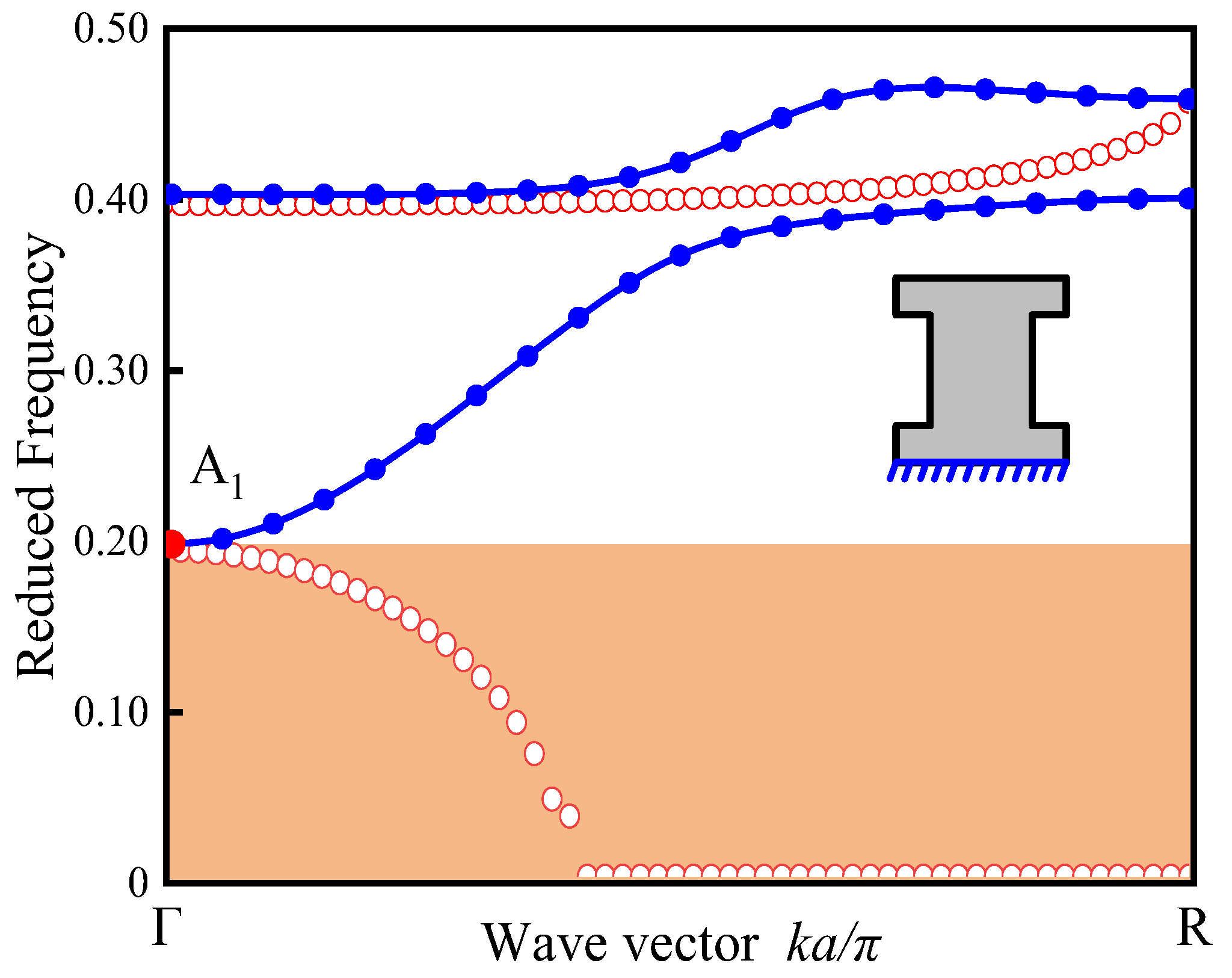

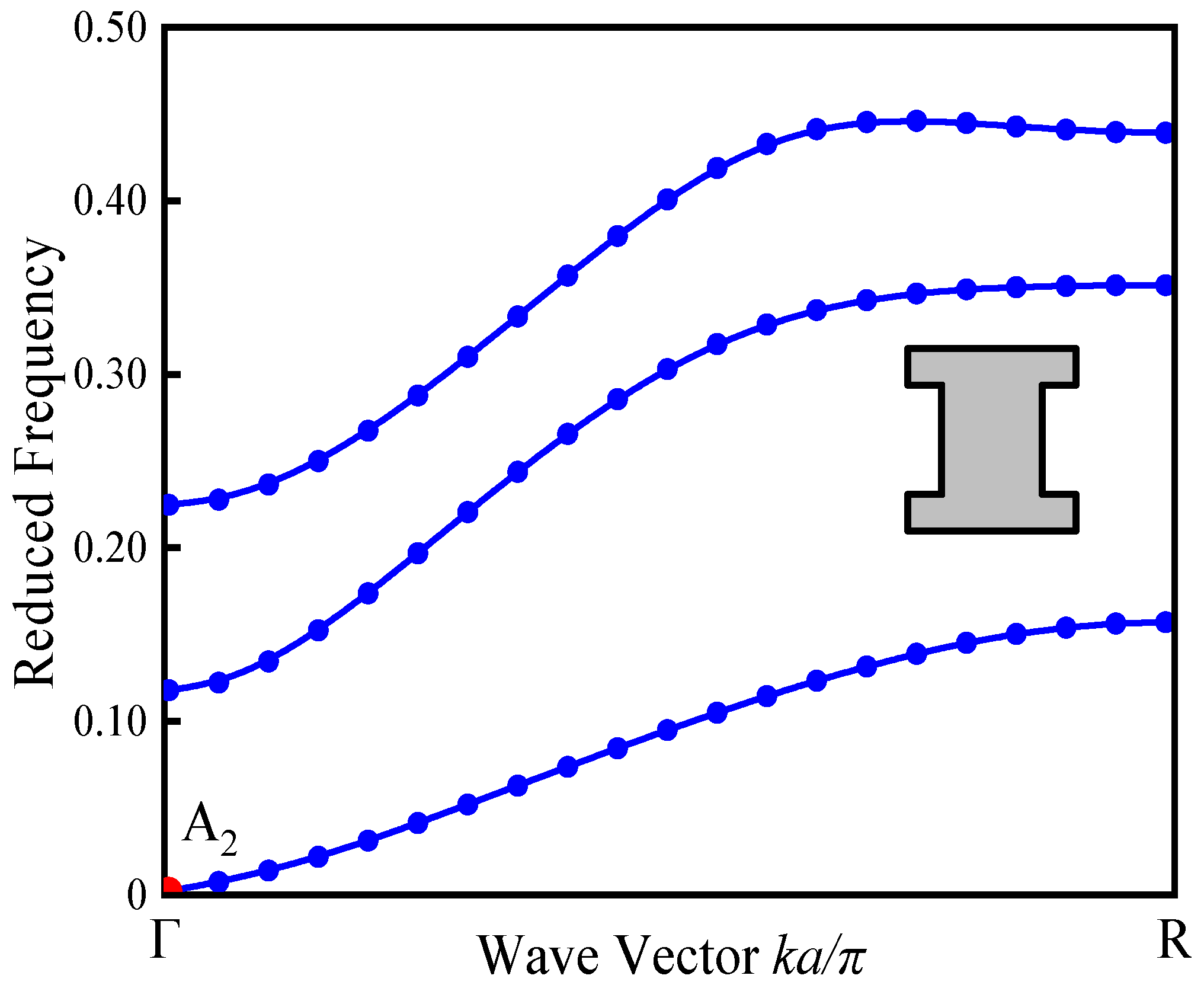
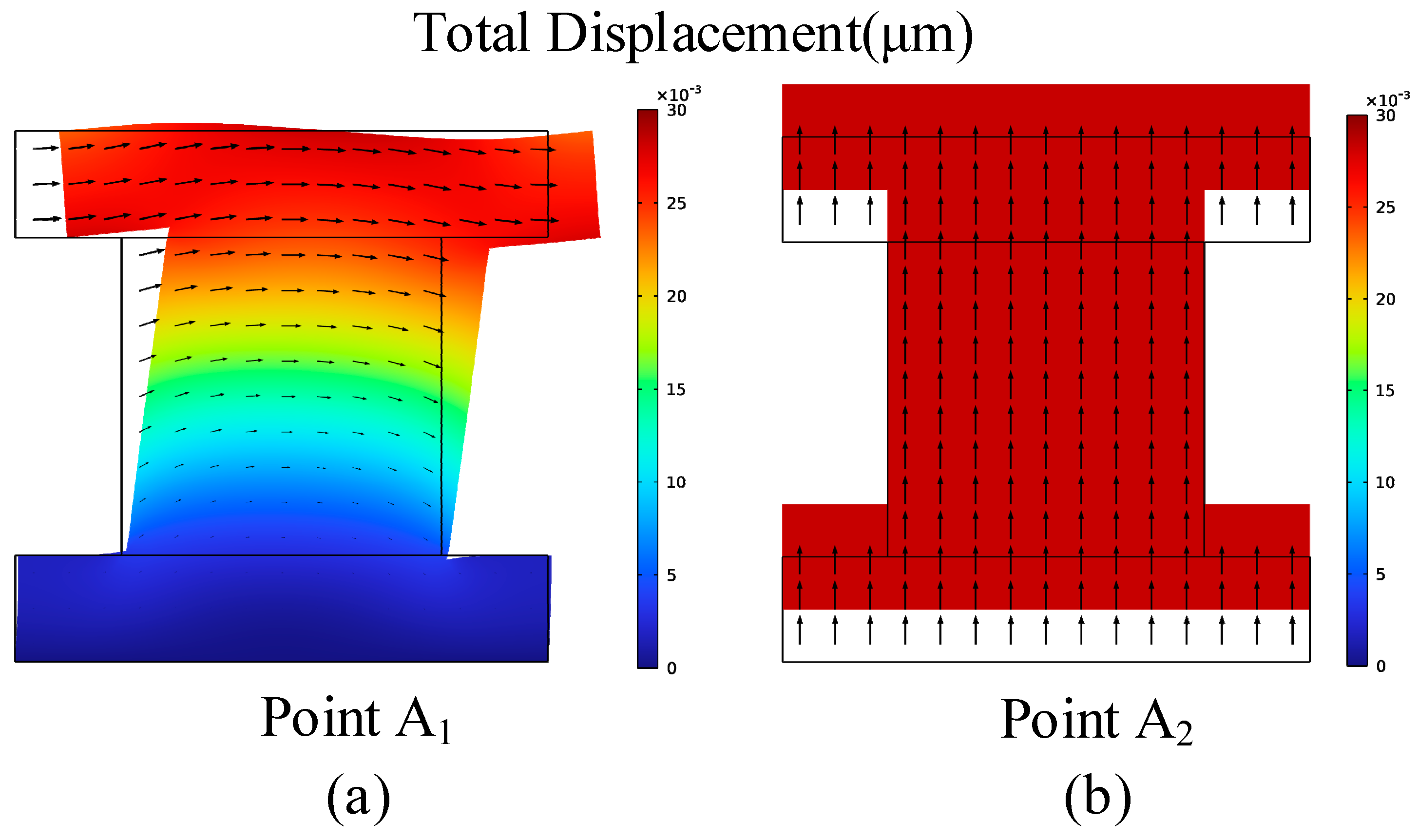
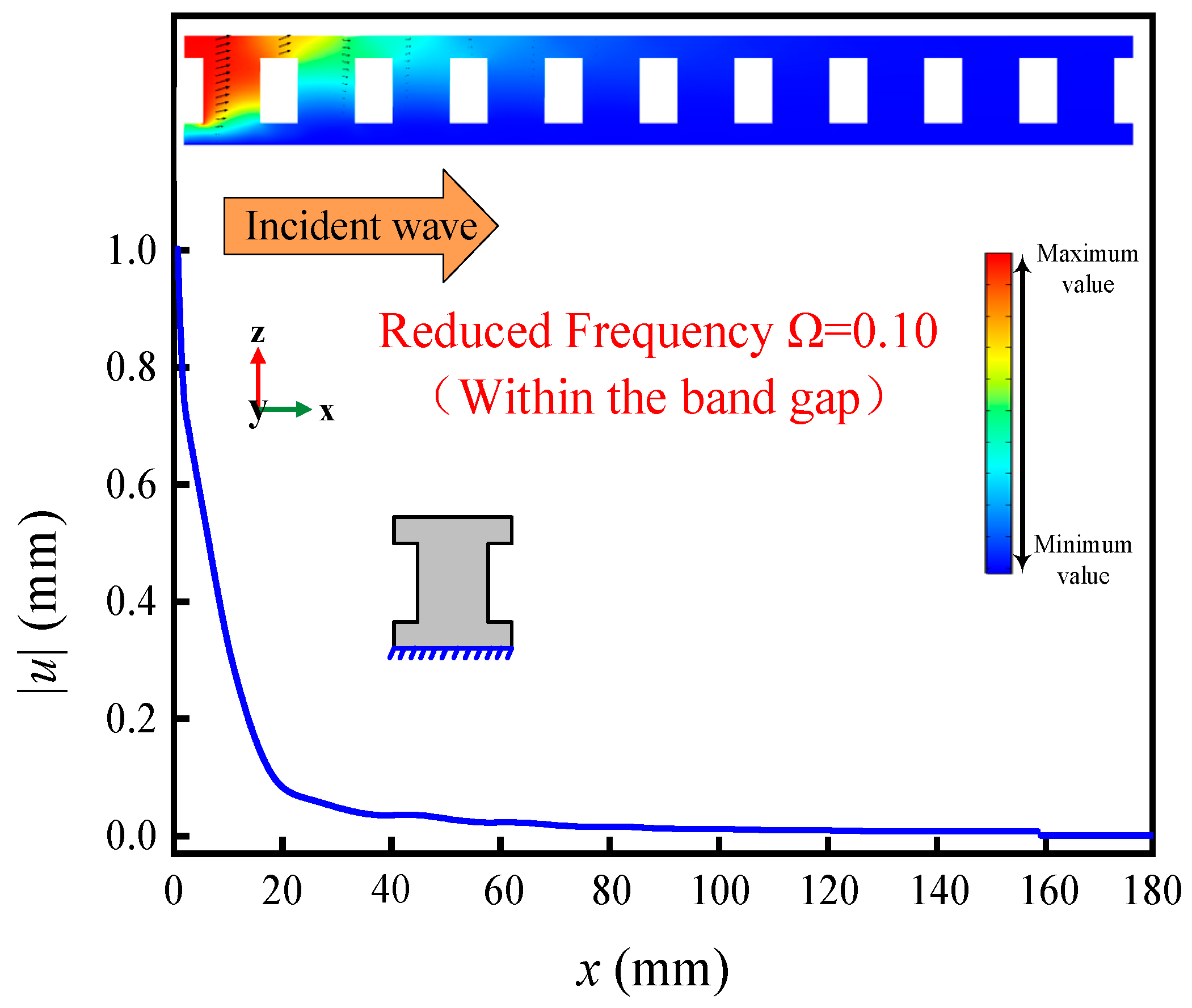
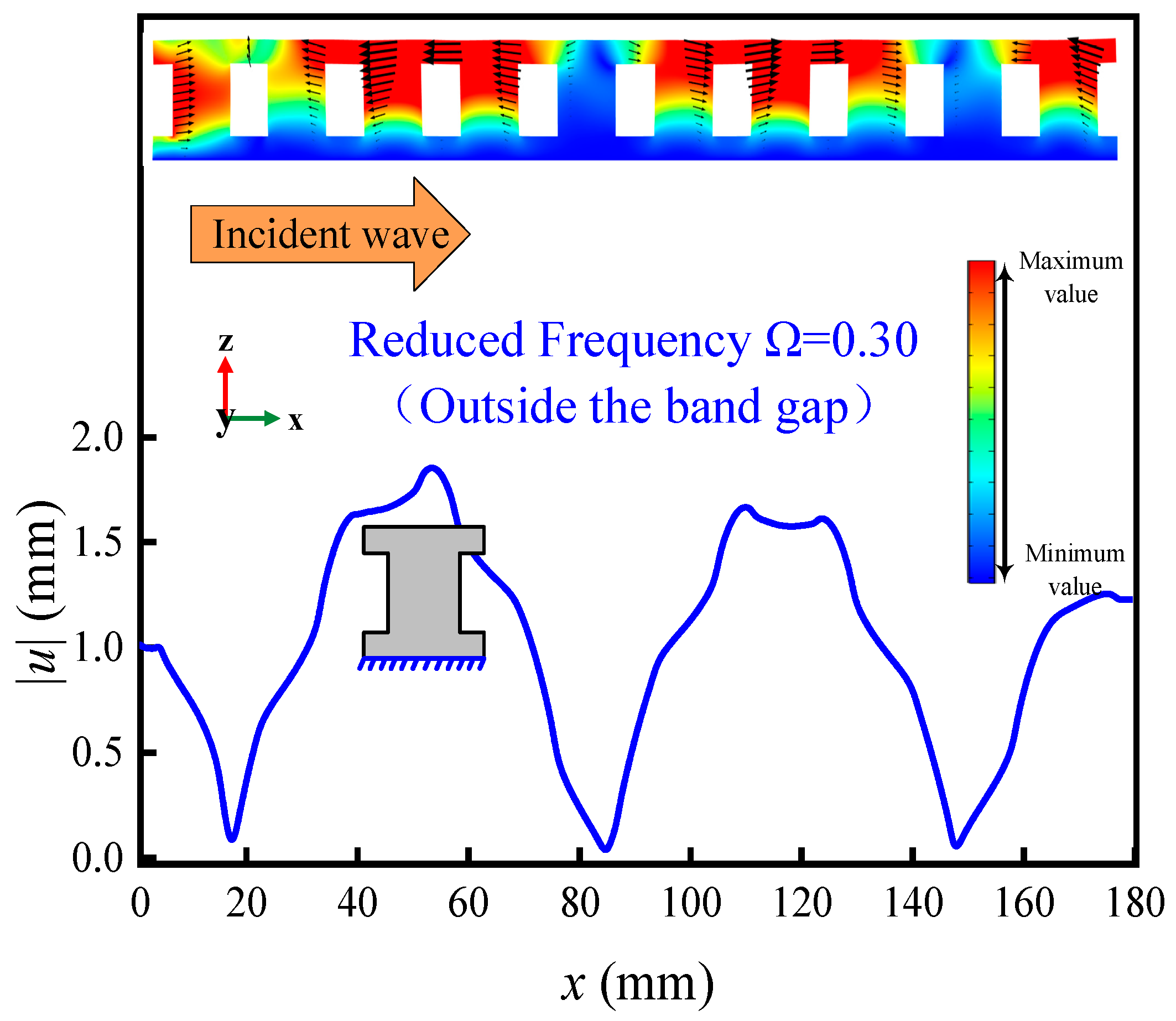
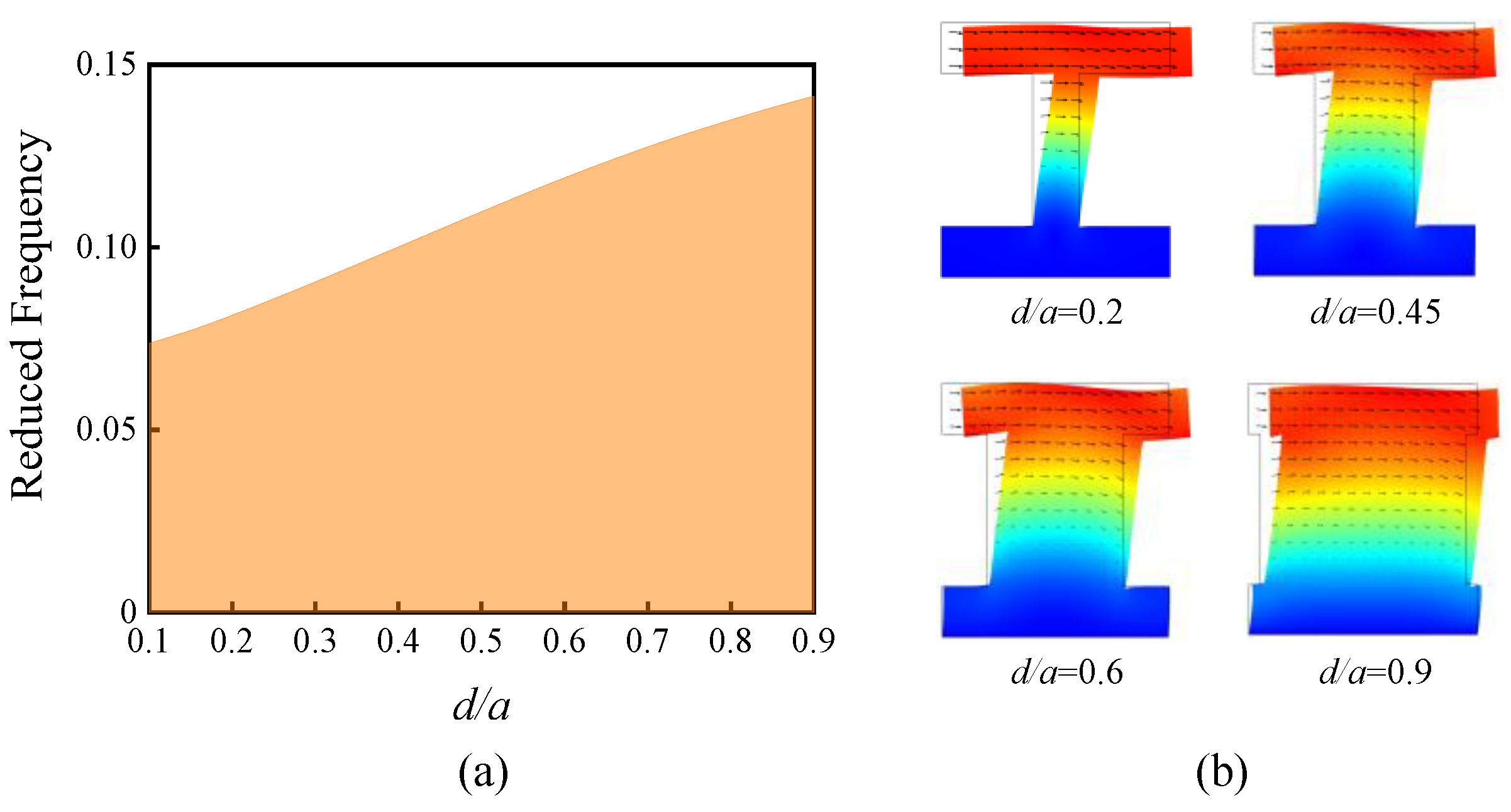
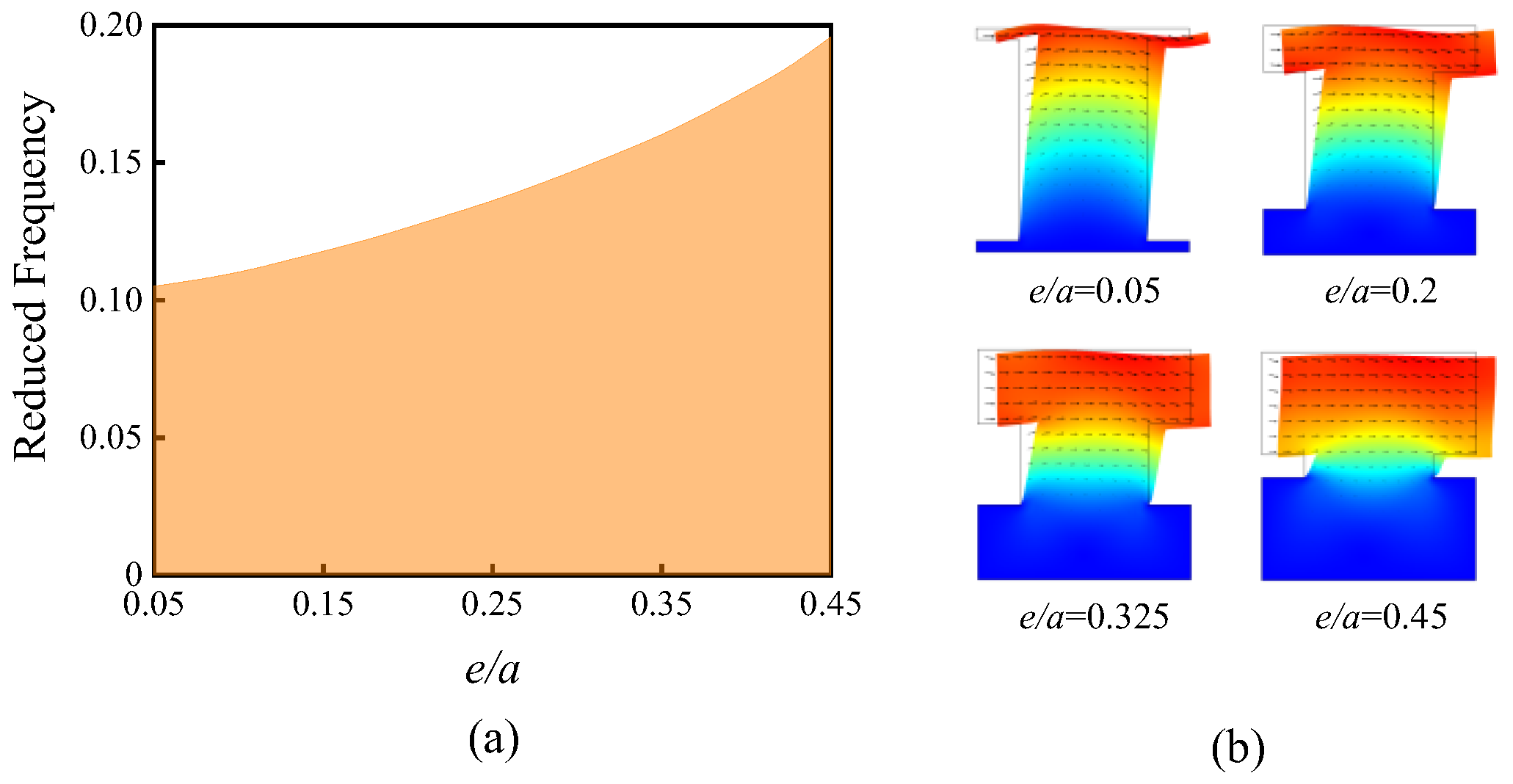
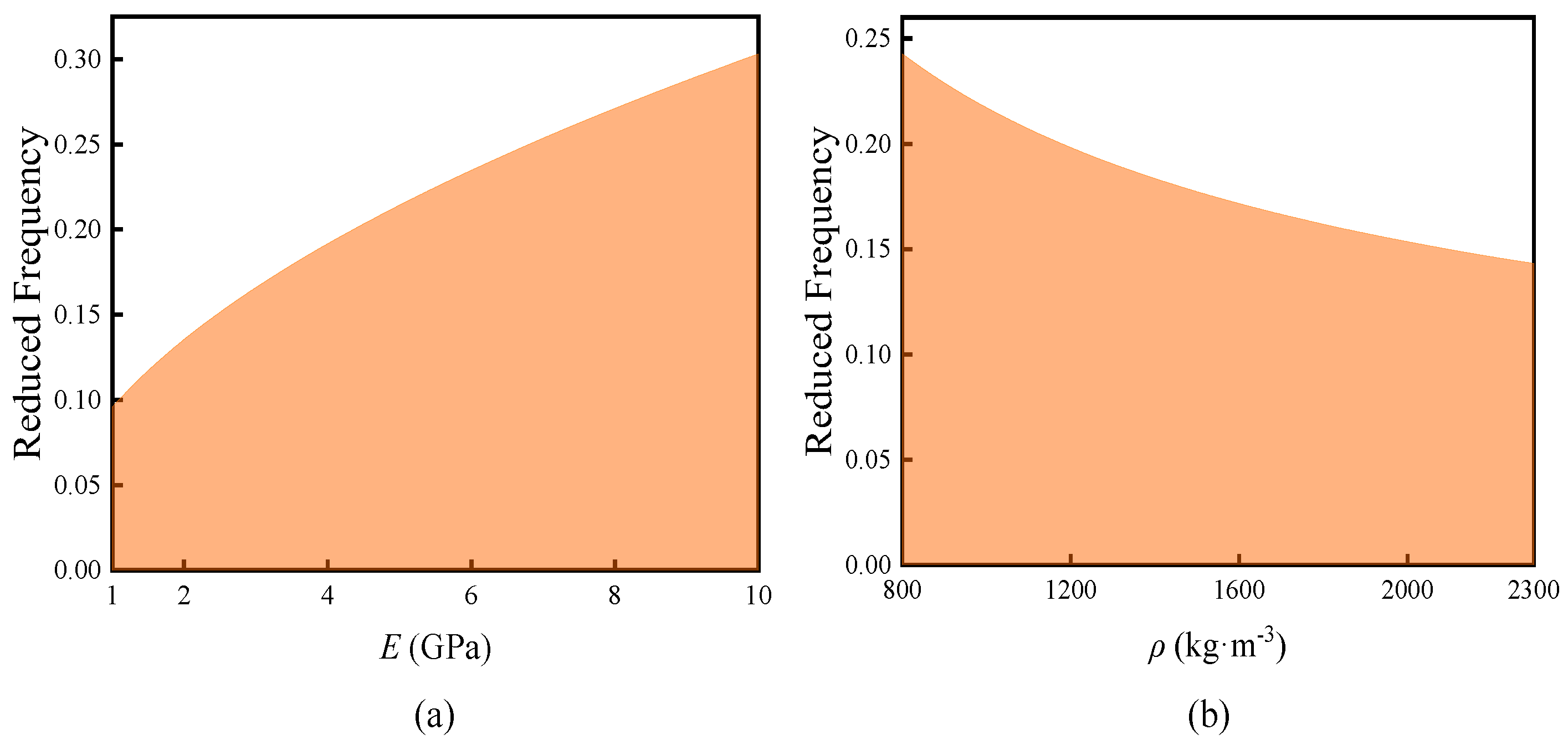
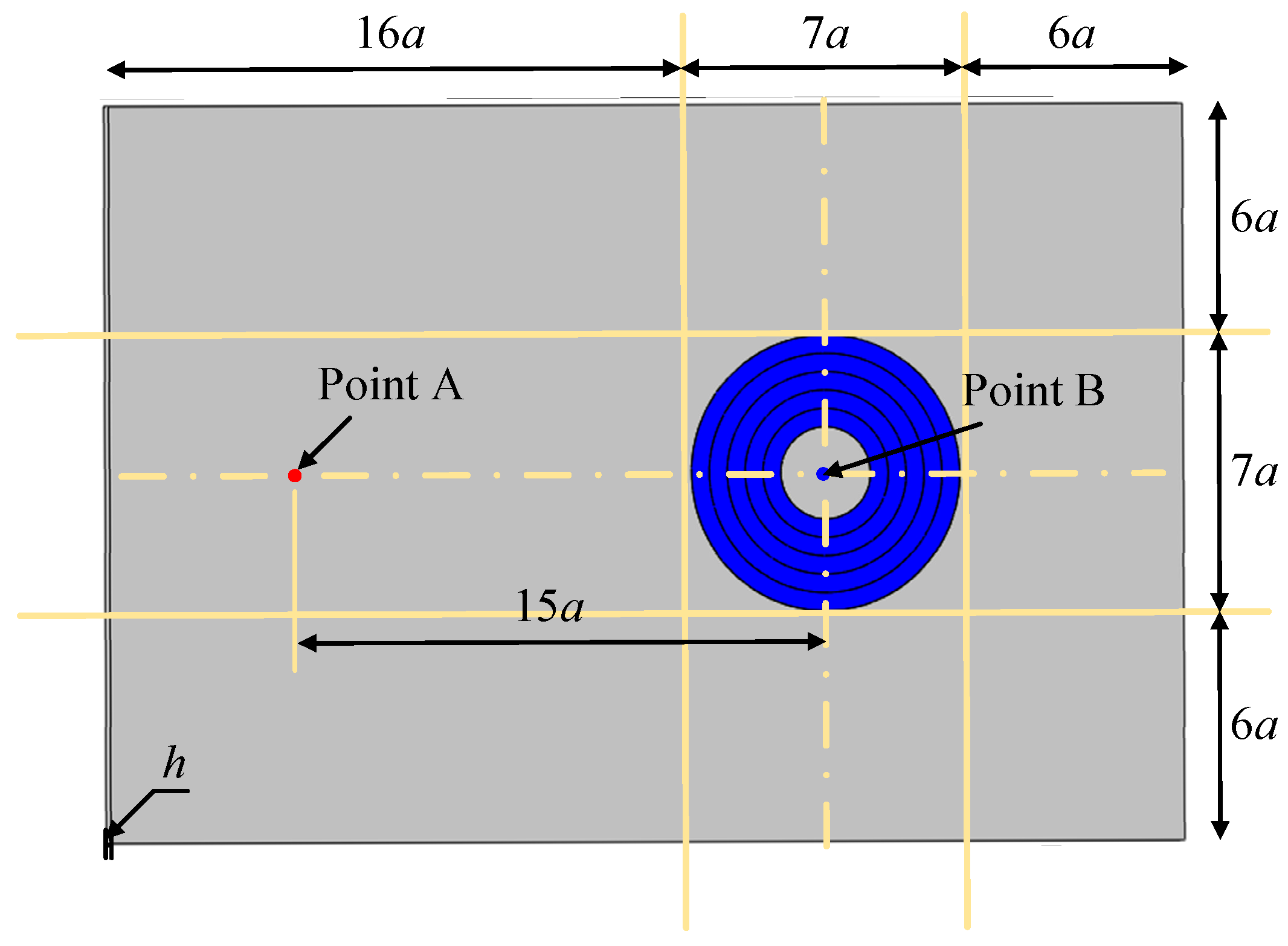
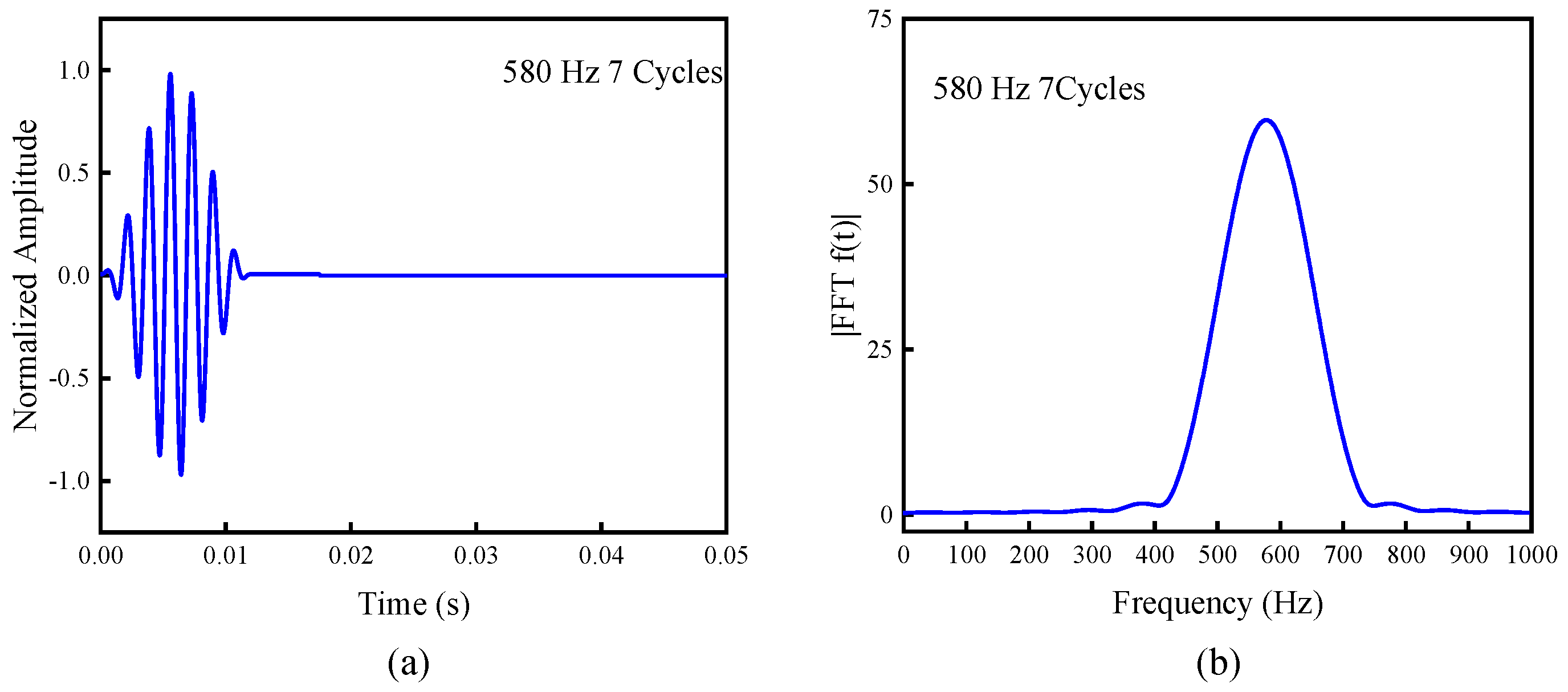
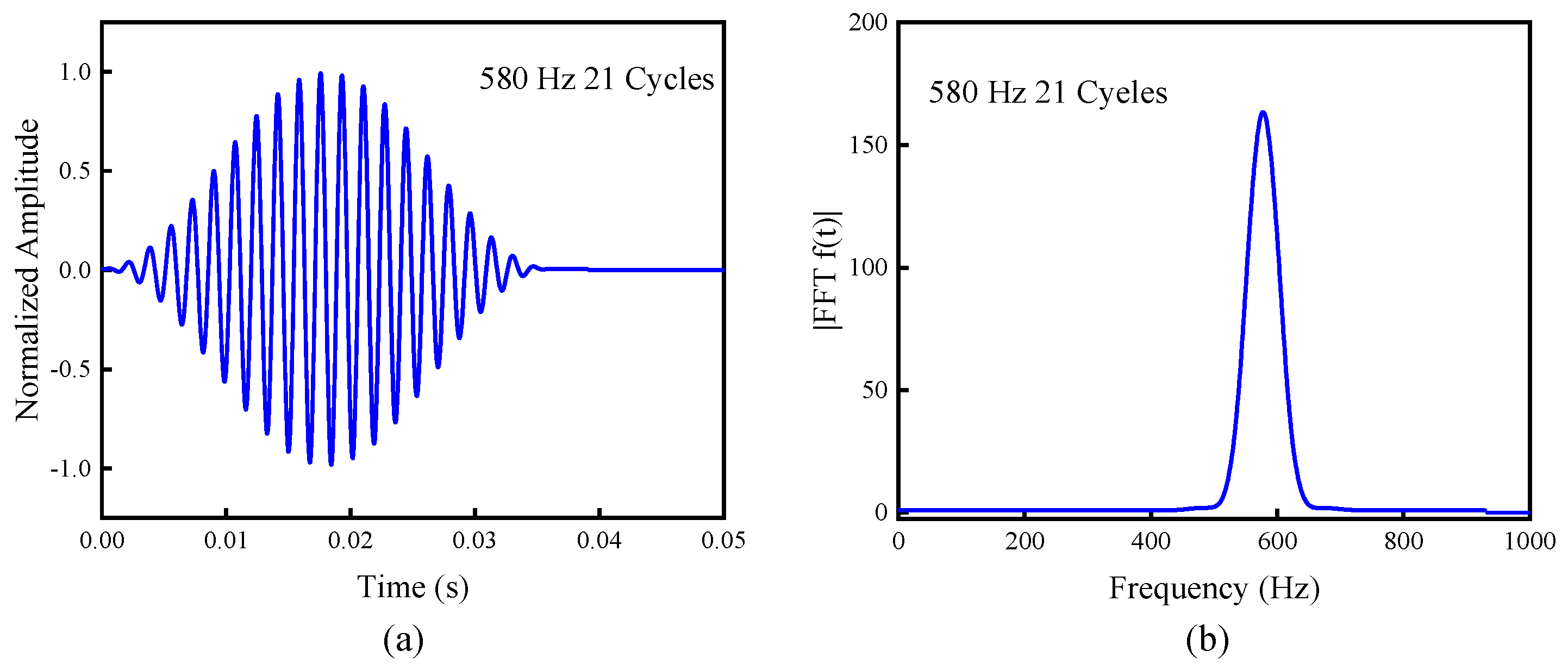
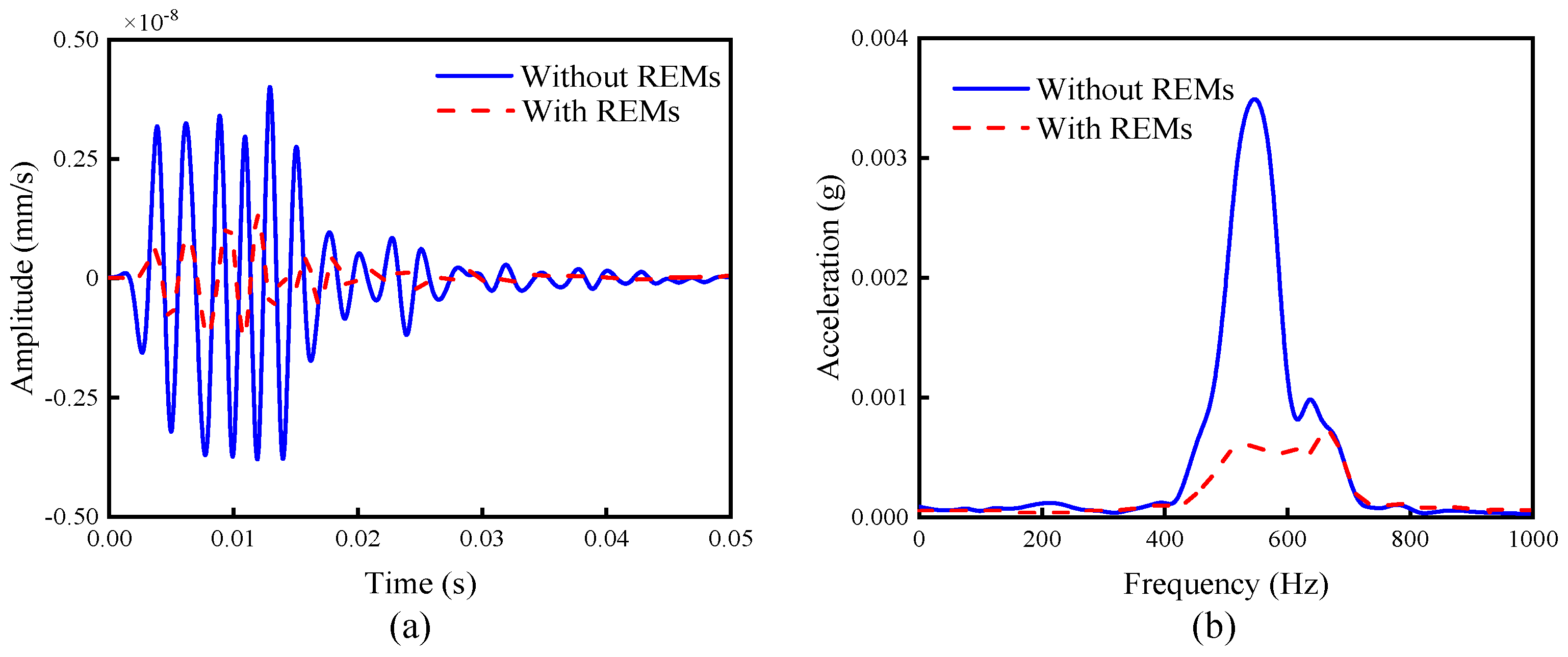
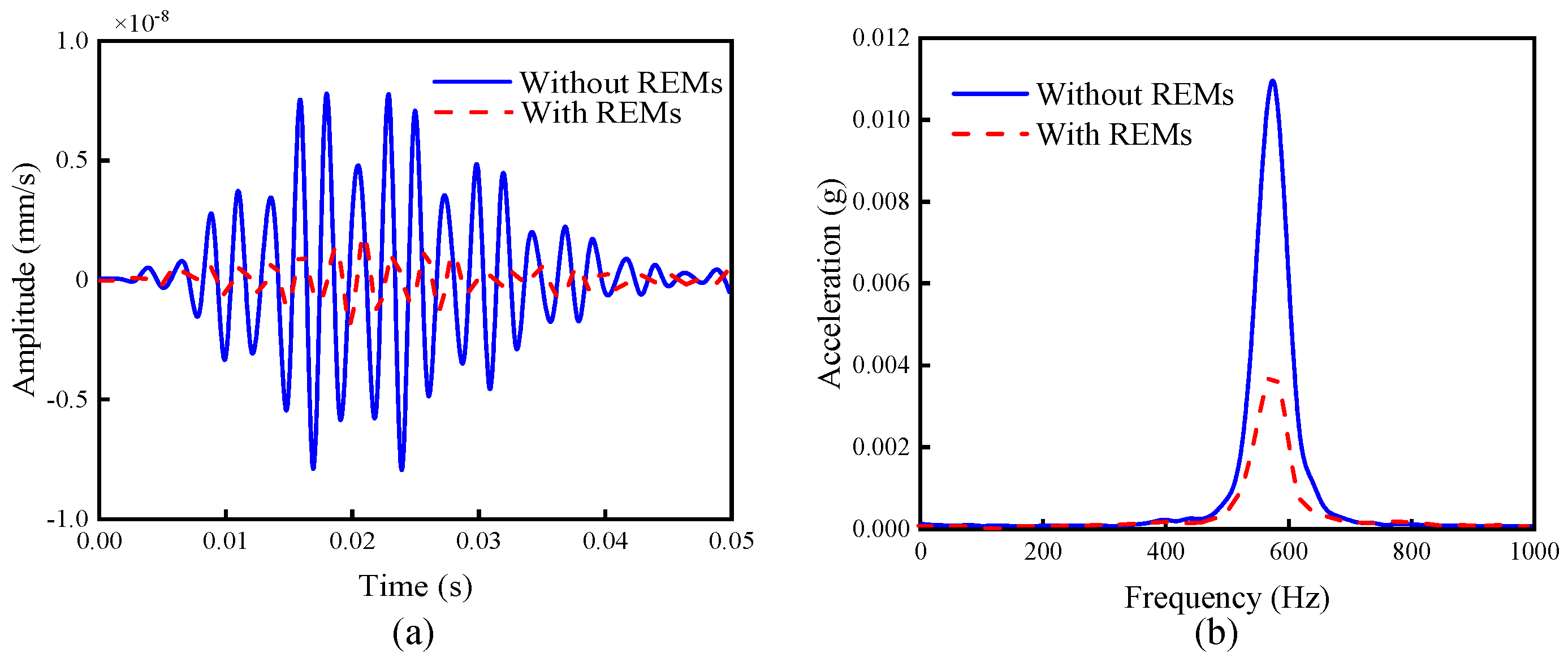
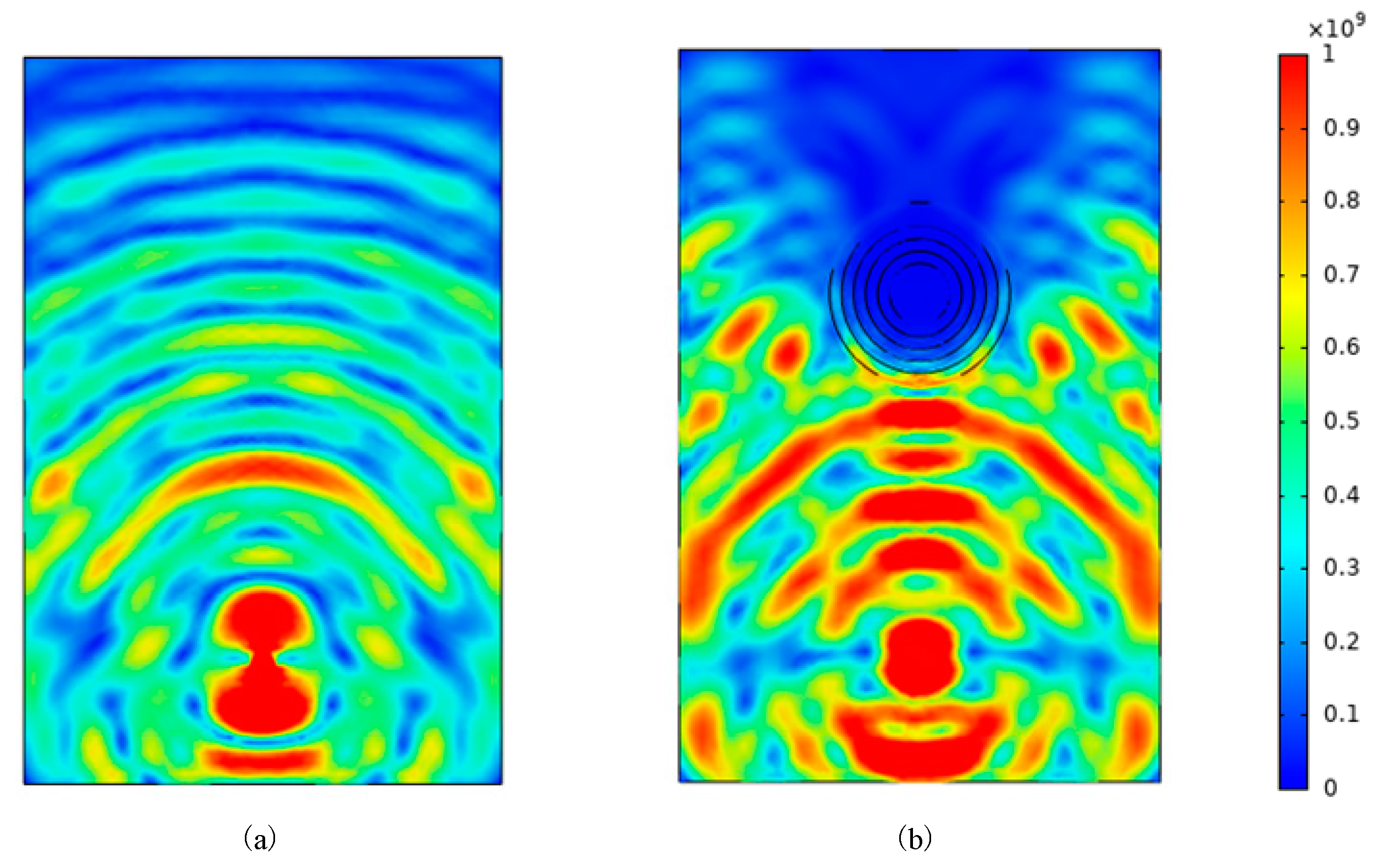
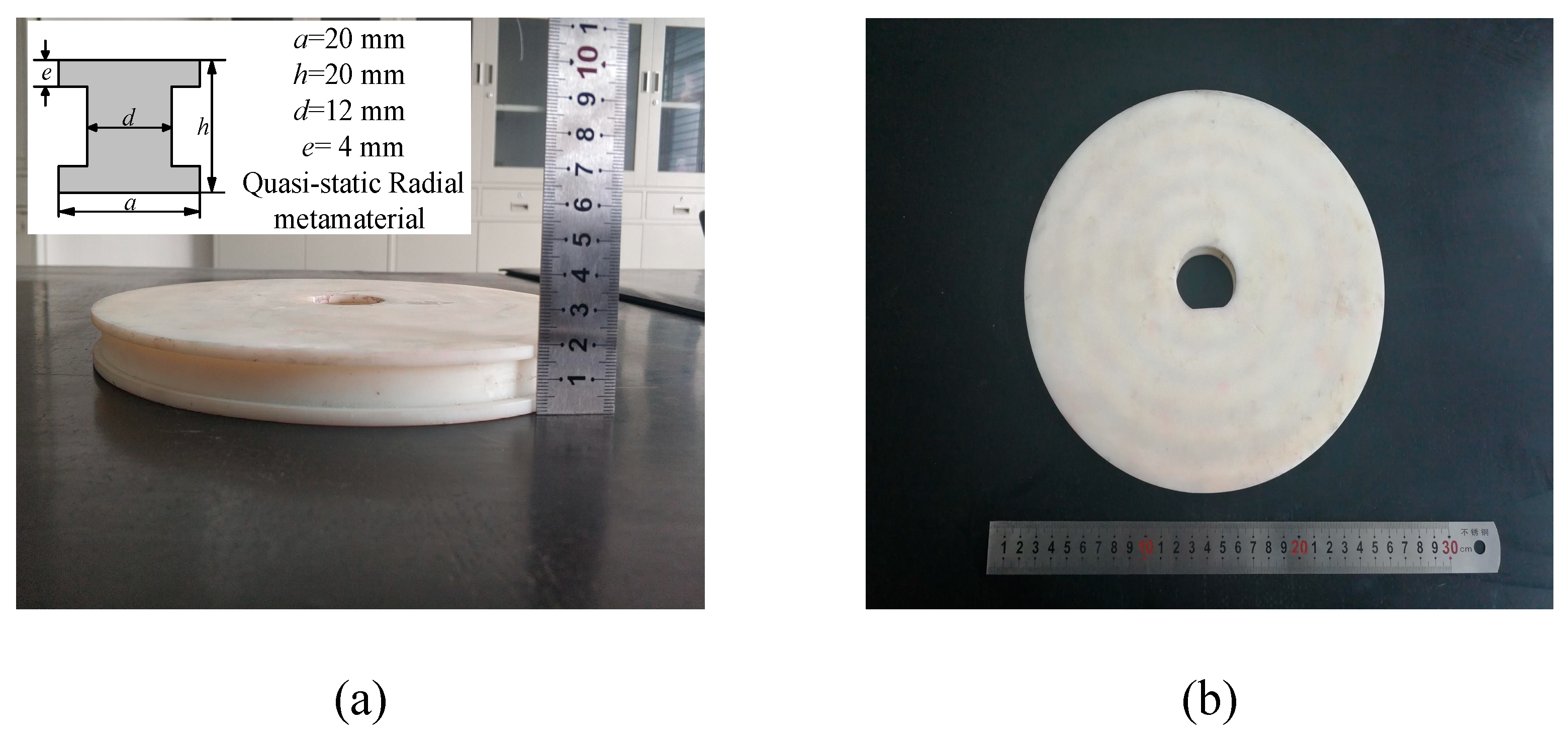
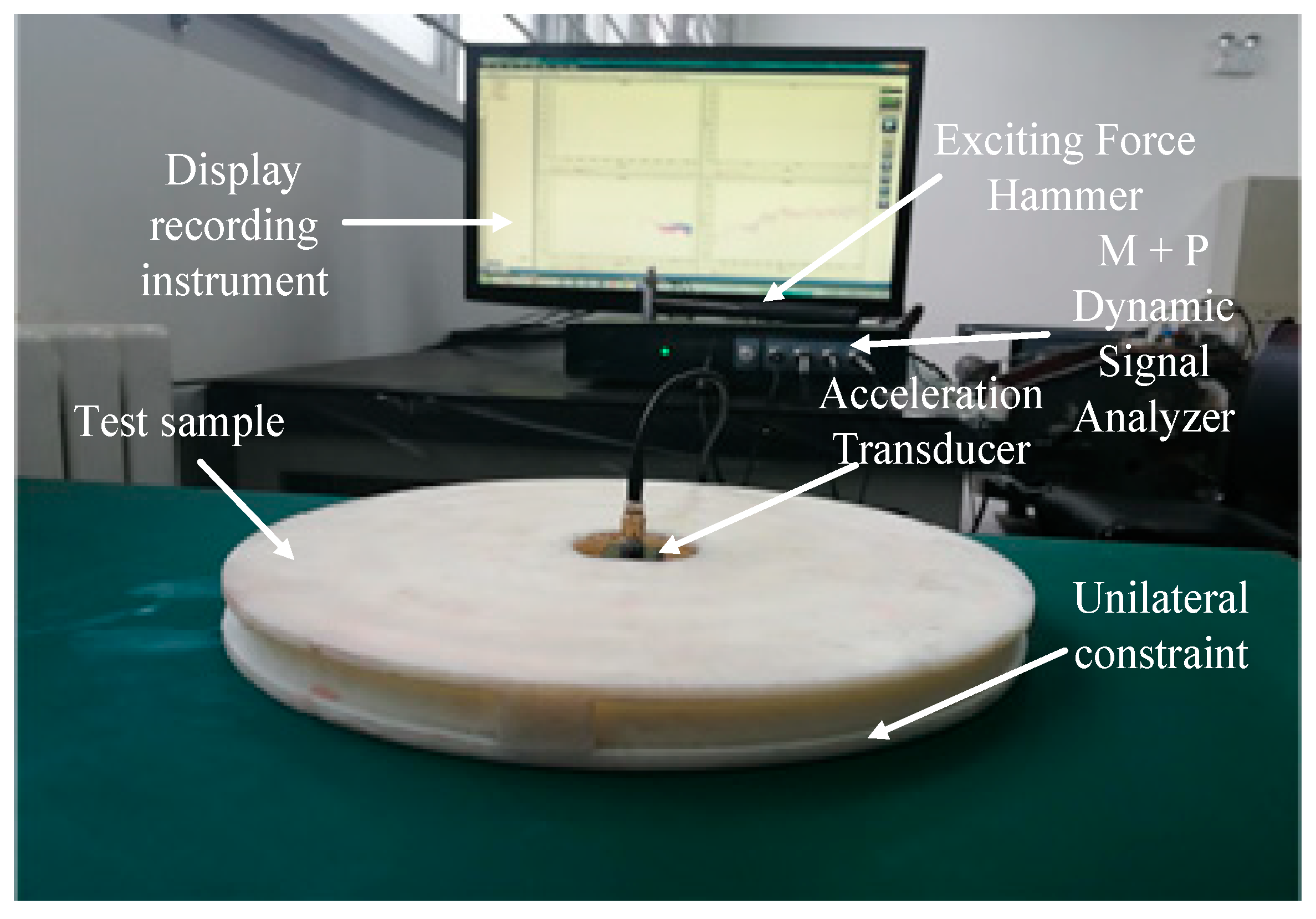
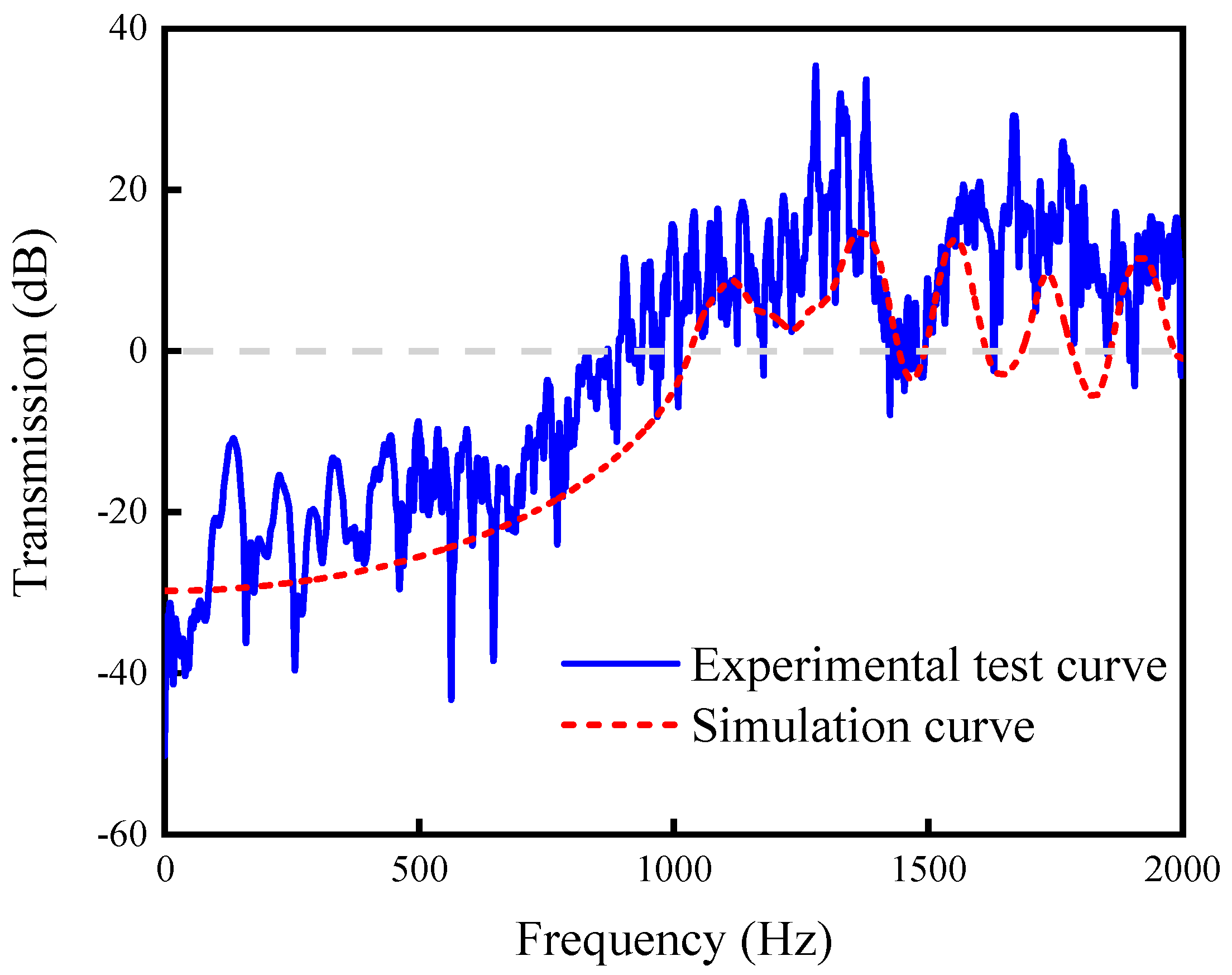
Publisher’s Note: MDPI stays neutral with regard to jurisdictional claims in published maps and institutional affiliations. |
© 2022 by the authors. Licensee MDPI, Basel, Switzerland. This article is an open access article distributed under the terms and conditions of the Creative Commons Attribution (CC BY) license (https://creativecommons.org/licenses/by/4.0/).
Share and Cite
Liu, H.; He, W.; Li, L.; Jia, Q. Theoretical and Experimental Investigations on the Ultra-Low-Frequency Broadband of Quasi-Static Metamaterials. Appl. Sci. 2022, 12, 8981. https://doi.org/10.3390/app12188981
Liu H, He W, Li L, Jia Q. Theoretical and Experimental Investigations on the Ultra-Low-Frequency Broadband of Quasi-Static Metamaterials. Applied Sciences. 2022; 12(18):8981. https://doi.org/10.3390/app12188981
Chicago/Turabian StyleLiu, Haixia, Weitao He, Lixia Li, and Qi Jia. 2022. "Theoretical and Experimental Investigations on the Ultra-Low-Frequency Broadband of Quasi-Static Metamaterials" Applied Sciences 12, no. 18: 8981. https://doi.org/10.3390/app12188981




